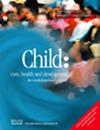The Impact of Parafunctional Habits on Orthodontic Malocclusions in Children With Cerebral Palsy
Abstract
Background
This study aimed to investigate the correlation between orthodontic malocclusion and parafunctional habits, including atypical swallowing, mouth breathing and drooling, in children with cerebral palsy (CP).
Methods
Fifty-one children with CP (ages 6–14) from the Spastic Children Foundation were assessed. Drooling, lip incompetence and malocclusion were evaluated using the Balasco and Ballard methods, Angle Classification and WHO standards. Soft tissue relations, facial type, profile and face ratios were examined via extraoral assessment and photo analysis. Fisher's exact test was used for statistical analysis.
Results
Among the children, 47% had lip incompetence, 57% exhibited mouth breathing, 63% had atypical swallowing and 66% showed increased overjet. Malocclusion findings included 45% with Class II molar relationships and 66% with parafunctional habits. A significant relationship was found between parafunctional habits and orthodontic malocclusion (p < 0.05).
Conclusion
A high prevalence of parafunctional habits was observed in children with CP, significantly correlating with orthodontic issues. Early preventive and interceptive orthodontic treatment before the growth phase is essential to improve swallowing, chewing, respiratory function and nutritional intake, ultimately enhancing overall quality of life.
Summary
- Parafunctional habits are highly prevalent in children with cerebral palsy.
- These habits are significantly associated with the development of malocclusion and craniofacial morphology.
- Complex tongue thrust, mouth breathing and severe drooling are strongly linked to skeletal and dental anomalies.
- Early multidisciplinary follow-up and preventive orthodontic approaches can reduce long-term complications.
- Swallowing patterns, respiratory types and oral motor functions should be evaluated together in clinical assessment and treatment planning.

 求助内容:
求助内容: 应助结果提醒方式:
应助结果提醒方式:


